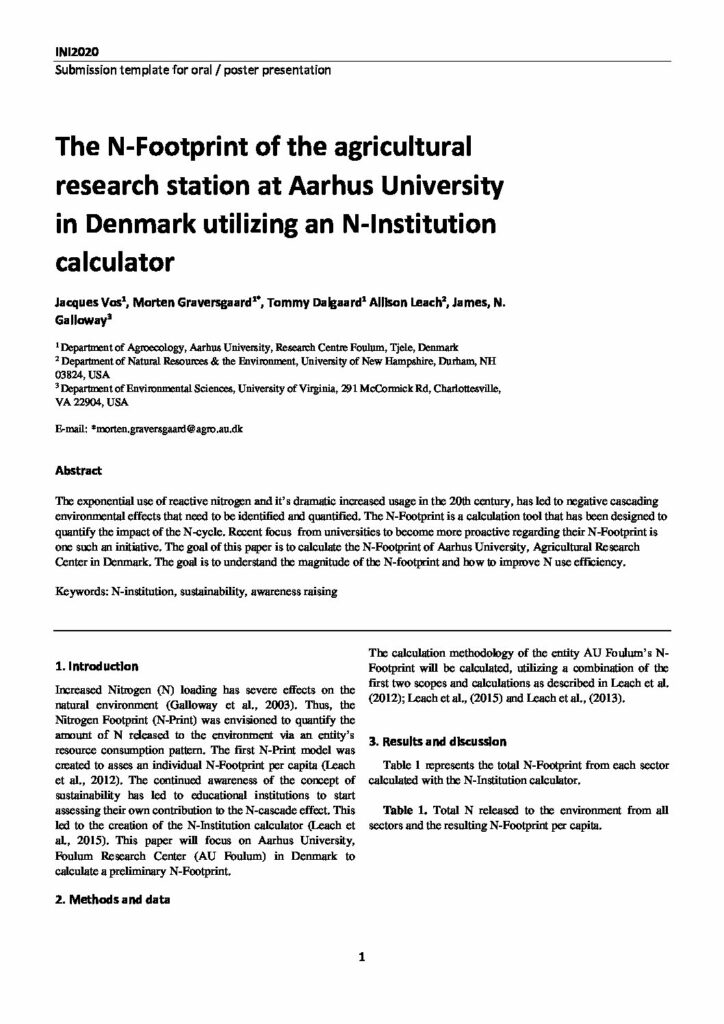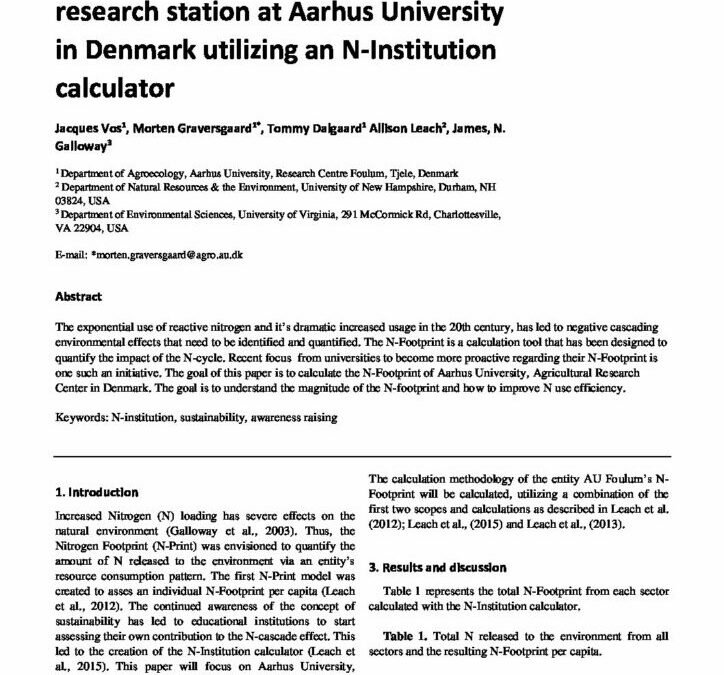The N-Footprint of the agricultural research station at Aarhus University in Denmark utilizing an N-Institution calculator

The exponential use of reactive nitrogen and it’s dramatic increased usage in the 20th century, has led to negative cascading environmental effects that need to be identified and quantified. The N-Footprint is a calculation tool that has been designed to quantify the impact of the N-cycle. Recent focus from universities to become more proactive regarding their N-Footprint is one such an initiative. The goal of this paper is to calculate the N-Footprint of Aarhus University, Agricultural Research Center in Denmark. The goal is to understand the magnitude of the N-footprint and how to improve N use efficiency.
Increased Nitrogen (N) loading has severe effects on the natural environment (Galloway et al., 2003). Thus, the Nitrogen Footprint (N-Print) was envisioned to quantify the amount of N released to the environment via an entity’s resource consumption pattern. The first N-Print model was created to asses an individual N-Footprint per capita (Leach et al., 2012). The continued awareness of the concept of sustainability has led to educational institutions to start assessing their own contribution to the N-cascade effect. This led to the creation of the N-Institution calculator (Leach et al., 2015). This paper will focus on Aarhus University, Foulum Research Center (AU Foulum) in Denmark to calculate a preliminary N-Footprint.
